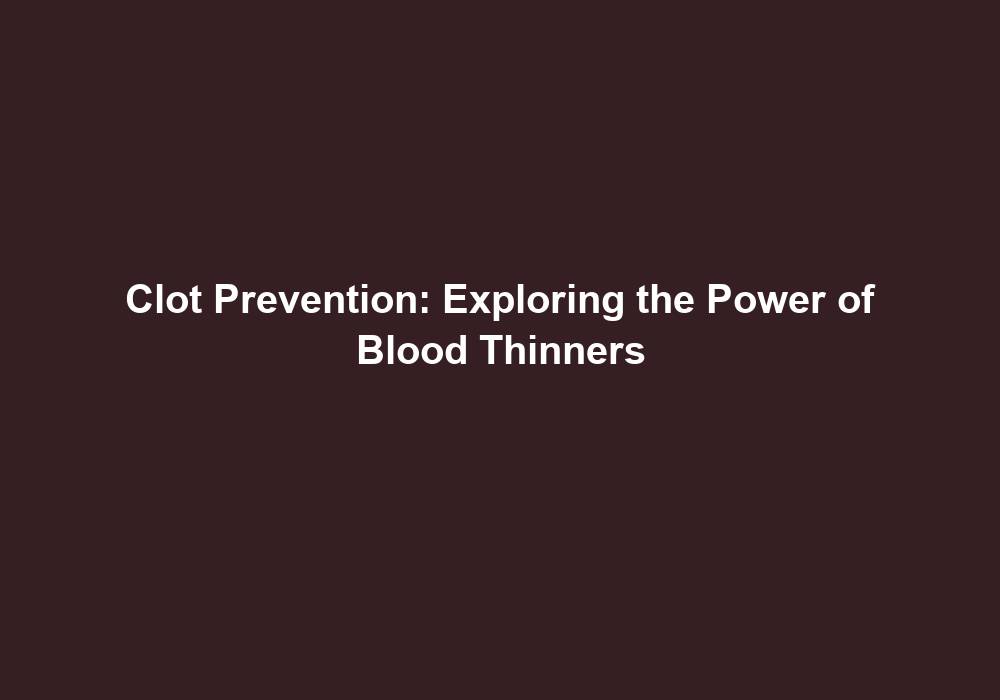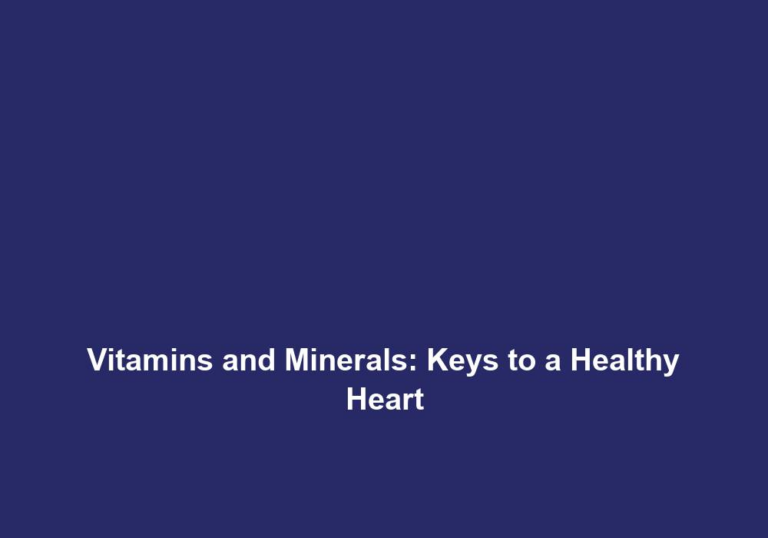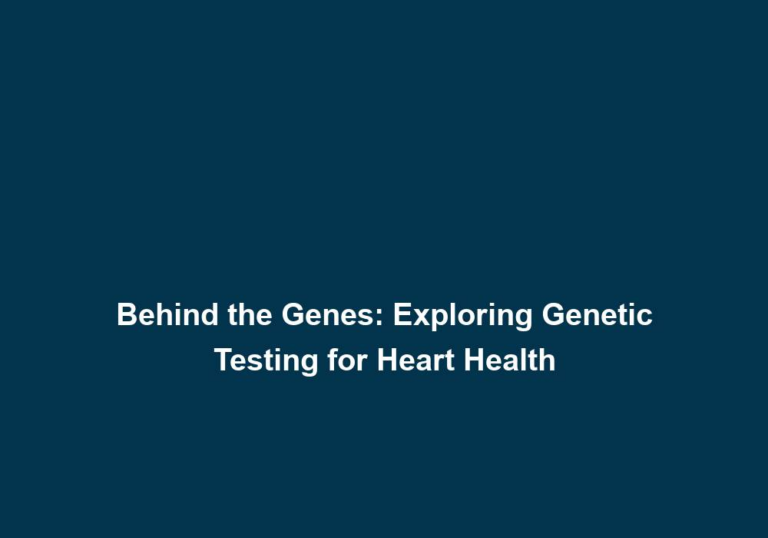Clot Prevention: Exploring the Power of Blood Thinners
In the realm of healthcare, clot prevention plays a critical role in maintaining optimal health. Blood clots can pose significant risks, potentially leading to life-threatening conditions such as deep vein thrombosis, pulmonary embolism, or stroke. To combat these risks, medical professionals often rely on blood thinners, also known as anticoagulants. This article delves into the power of blood thinners and how they contribute to clot prevention.
Introduction
In the world of healthcare, clot prevention plays a crucial role in maintaining optimal health. Blood clots can pose serious risks, leading to life-threatening conditions such as deep vein thrombosis, pulmonary embolism, or stroke. To combat these risks, medical professionals often turn to blood thinners, also known as anticoagulants. In this article, we will delve into the power of blood thinners and how they contribute to clot prevention.
Blood clot formation can be a complex process influenced by various factors. Understanding how blood clots form is essential in comprehending the significance of blood thinners. Normally, blood flows smoothly through our veins and arteries. However, certain circumstances can lead to the formation of clumps, resulting in blood clots. These semi-solid masses can block blood vessels, impeding the normal flow of blood and potentially causing severe health complications.
The Role of Blood Thinners
Blood thinners, also referred to as anticoagulants, are medications designed to prevent or reduce the formation of blood clots. These medications work by interfering with the natural clotting process, thereby reducing the risk of clot-related disorders. While blood thinners do not dissolve existing clots, they effectively prevent the formation of new ones and help existing clots shrink over time.
Types of Blood Thinners
There are two main types of blood thinners:
-
Oral Anticoagulants: These blood thinners are taken orally in the form of tablets or capsules. They are generally prescribed for long-term use, usually for individuals at high risk of blood clots or those with certain medical conditions. Examples of oral anticoagulants include warfarin, rivaroxaban, apixaban, and dabigatran.
-
Injectable Anticoagulants: Injectable blood thinners are administered through injections. They are often used in emergency situations or for short-term treatment. Common examples of injectable anticoagulants include heparin and enoxaparin.
How Blood Thinners Work
Blood thinners work by inhibiting or interfering with specific clotting factors in the blood. They target different pathways involved in the clotting process, preventing the formation of fibrin, a protein essential for clot formation. By reducing the blood’s ability to clot, blood thinners effectively minimize the risk of blood clots.
Blood thinners are prescribed for various conditions and situations, including:
-
Atrial Fibrillation: Atrial fibrillation is an irregular heartbeat that increases the risk of blood clots forming in the heart. Blood thinners are often prescribed to prevent clots that could potentially travel to other parts of the body and cause complications.
-
Deep Vein Thrombosis: Deep vein thrombosis is a condition where blood clots form in the deep veins of the legs or pelvis. Blood thinners are used to prevent the clot from growing larger or dislodging and traveling to the lungs.
-
Pulmonary Embolism: Pulmonary embolism occurs when a blood clot travels from another part of the body and becomes lodged in the arteries of the lungs. Blood thinners are vital in preventing further clot formation and reducing the risk of recurrent embolism.
-
Mechanical Heart Valves: Individuals with mechanical heart valves are at higher risk of forming blood clots. Blood thinners are prescribed to prevent clots from forming on or around the valves.
-
Stroke Prevention: For individuals who have already experienced a stroke or are at high risk of stroke, blood thinners may be recommended to reduce the risk of clot formation in the brain.
Blood thinners, while highly effective in preventing blood clots, can also carry some risks and potential side effects. These include:
-
Bleeding: Blood thinners can increase the risk of bleeding, which presents as excessive or prolonged bleeding from minor cuts or injuries. It is crucial to monitor any signs of bleeding and seek medical attention if necessary.
-
Bruising: Blood thinners can make the skin more susceptible to bruising, even with minor trauma. However, this is generally not a cause for concern unless excessive bruising occurs.
-
Gastrointestinal Issues: Some individuals may experience gastrointestinal disturbances, such as stomach pain or indigestion, while taking blood thinners. It is advisable to discuss any concerns with a healthcare professional.
-
Drug Interactions: Blood thinners can interact with certain medications, including over-the-counter drugs, herbal supplements, and other prescription medications. It is important to inform your healthcare provider about all the medications you are taking to avoid potential interactions.
In conclusion, blood thinners play a vital role in clot prevention and reducing the risk of serious health complications. By inhibiting the clotting process, these medications help maintain healthy blood flow and prevent the formation of blood clots. It is essential to follow the prescribed dosage and regularly monitor for any potential side effects. If you have any concerns or questions regarding blood thinners, it is always recommended to consult with a healthcare professional for personalized advice.







